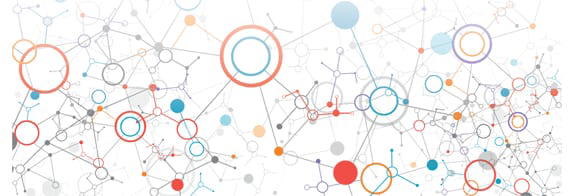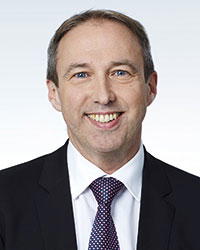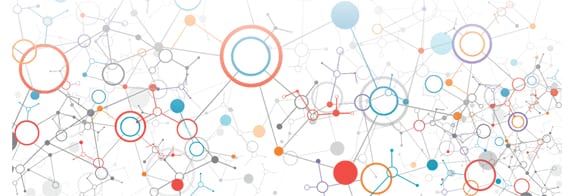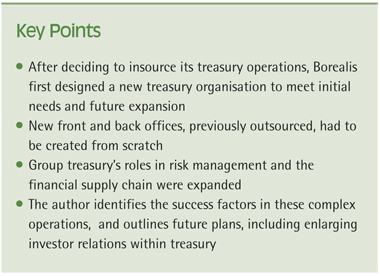

- Jan-Martin Nufer
- Vice President Treasury & Funding, Borealis
Leveraging Transformation to Enhance Treasury’s Value Proposition

by Jan-Martin Nufer, Director Treasury & Funding, Borealis Group, Austria
In the October 2014 edition of TMI, Jan-Martin Nufer, Director of Treasury & Funding at Borealis, introduced the company’s treasury transformation project, which included insourcing treasury operations from a bank agency treasury. This involved redefining treasury technology, building talent and competences, developing a flexible organisational framework to integrate acquisitions, and firmly establishing a culture of constant improvement. As a result of excellent reader feedback from this article, Borealis was awarded the 2014 TMI Corporate Recognition Award for Innovation and Excellence in Treasury Transformation. In this article, Jan-Martin discusses some of the factors that have contributed to the evolving design and responsibilities of Borealis’ treasury organisation.

[[[PAGE]]]
Organisational factors
Having decided to insource our treasury operations, the first logical step was to design a new treasury organisation that would meet our initial needs, but also support future expansion both as a result of changes to the business, such as M&A, and an evolution in treasury’s responsibilities. This included defining both the ‘building blocks’ within the treasury function, as well as the business processes that would support our current and future activities. There was a range of considerations that we needed to take into account. For example, from a governance point of view, it was essential to set up appropriate segregation of duties. In addition to the classical functions, treasury needed to link closely with credit and collections, and accounts payable, as essential drivers of cash and working capital management.
It was important to determine the business culture that we wanted to adopt from the beginning, with transparency, mutual respect and striving for excellence amongst our key cultural priorities. This influenced issues such as whether to build individual offices or have an open plan working space, and where treasury should be physically located in relation to other relevant business functions. For example, credit, collections and accounts payable are all located on the same floor, which encourages better communication and awareness of customer issues. While these would appear to be small issues, they can have a great impact on how efficiently the department functions.
Balancing resource requirements
As front office and back office had been outsourced in the past, we needed to create these functions in the new treasury organisation. In many respects, starting from scratch is easier than migrating between different organisational structures, as recruitment decisions are effectively determined by what resources are required and the budget available.
For our front office, therefore, we determined that one experienced individual would take responsibility for all FX, interest rate and derivative transactions, with back-up support provided by management.
When deciding on our back-office resourcing, we wanted to ensure high levels of straight-through processing (STP) to avoid the need to dedicate resources to manual transaction handling and to enable smooth workflows across different locations. We were therefore able to combine back-office responsibilities within our existing cash and bank / payment factory team rather than appointing a separate team. Hence we could establish an effective treasury back office with no additional headcount.
Middle office was far easier, in that it was already managed internally within Borealis, but we realigned the reporting lines so that the function would report into the central group financial risk management, which in turn would report into both group treasury and internal audit.

Enterprise risk management
In addition to realigning our financial risk management activities and the establishment of a newly designed central function, we also wanted to use the opportunity that transformation offered to enhance the support we provide to the business in financial risk management, in particular to promote greater consistency in the way that risk was managed across the group. Following consultation with the business, our financial risk management function was given central responsibility for setting up risk management policies, processes and benchmarks. This team now also works with a risk coach network across the business, so that we achieve an enterprise-wide view of risk and a globally consistent approach to measuring and monitoring risk metrics.
This has been an evolving process, and over time, the scope of this function has expanded. For example, during the
2008-9 global financial crisis, which was also around the time that we were completing the insourcing of our treasury operation, liquidity risk assumed a far greater priority than it had in the past, so it became part of our group-wide risk metrics portfolio. In addition, we have taken on responsibility for the commodity trade risk analysis team, again with the objective of taking a more integrated, expanded view of risk. Summarising, we believe the approach of having one central financial risk management function that oversees the departments responsible for the handling and mitigation of the risks is key for an efficient and integrated risk assessment.
Integrating the financial supply chain
It is not only risk management where we have expanded the role of group treasury. In 2013, we integrated credit and collections into treasury. We had seen from the experience of other corporations the advantages of bringing these functions together. In particular, as treasury is now closer to the commercial side of the business, our ability to understand and adapt to business constraints is enhanced. For example, by becoming involved in overdue collections, we can be more refined in planning our working capital requirements and improve accuracy in cash flow forecasting. Furthermore, the credit and collections functions can leverage the information available in treasury on country risk assessments, FX forecasting etc. The quickly evolving, seamless co-operation between the areas underpins the advantages of combining them.
The next step was to centralise accounts payable into treasury, enhancing the payment factory and internal bank set-up. The addition of accounts payable at the beginning of last year rounds up the picture. While accounts payable is not a logical addition to treasury in some organisations, where it may be handled in accounts or a shared service centre, treasury had the necessary skills and proven expertise in managing financial technology and processes, and implementing appropriate controls. There were considerable benefits to our cash and banking team working closely with accounts payable, such as streamlining bank relationships and connectivity, and rationalising processes. Furthermore, we had already demonstrated our ability to integrate new functions into treasury successfully.
When centralising both credit and collections, and accounts payable into treasury, we recognised that these are part of an end-to-end customer-to-collection (C2C) or purchase-to-pay (P2P) process. Consequently, we worked closely with procurement (P2P) and sales (C2C) to streamline each step in the process as far as possible to enhance transparency, efficiency and control. This has now been embedded formally in a two-year payables excellence programme which will span a larger number of business functions in the organisation.
Success factors
Organisational transformation is only possible with the right people, who offer the relevant skills and positive attitude to change, and the right management support to address any organisational obstacles. In our experience, there is far less organisational resistance when change is driven by business necessity, which has been the case at Borealis. Having identified the need for change, however, the next stage is to determine where a business function should reside. In addition to the skills, experience and technology that treasury offered in this instance, we could also build the migration into our wider treasury insourcing and transformation initiative, avoiding the need to provide budget and resources for a separate project.[[[PAGE]]]
Today, we have 55 people in treasury across four business functions. Although this team works together as a single, centralised department, team members are based in different locations. Our front, middle and back office is divided across our headquarters in Vienna and our office in Belgium, which was formerly our co-ordination centre and where part of our financial processes organisation is located. We also have credit analysts in Brazil and the US, and accounts payable e.g., in Central and Eastern Europe and the Nordics. However, although geographically dispersed, we have a fully centralised approach to policies, processes, controls and technology. For example, we use a single treasury management system, and our ERP for accounts payable. We use SunGard’s AvantGard Receivables (GetPaid) for credit, collections and customer relationship management (CRM) in our functions. This allows us to set up credit rating, scoring and payment history, and track call records and customer payment behaviour across all of our locations. It provides a central database which allows access and review for the respective decision making entities and colleagues working on a credit file. Escalations and audit logs are produced automatically, which is very useful.
Future plans
We are working on further expanding our investor relations function within treasury. As we are not a publicly-listed company, we do not need a fully-fledged investor relations operation and were primarily focused around the bank and financial institutions part. However, as we have been significantly diversifying our funding sources during the last years and will continue to do so in the future, such as through bond issuances, US and European private placements and transactions with supranational institutions, we had to support investors’ information needs and proactively develop the professional set-up including appropriate ad-hoc release mechanisms and document provision. Hence our investor relations has been and will be significantly expanded. The recent, externally best visible steps were the new investor relations internet platform and the new fees as well as central information boxes.
Treasury at Borealis is always changing and evolving, not least due to our active M&A programme in recent years, but also based on a continuous external benchmarking searching for best practice. We have already achieved a great deal in terms of centralising, automating, refining and expanding treasury responsibilities, and our focus now is to ensure that we deliver the best possible service to the group across these business functions and further establish treasury as one key support function.
In the next article in this series, Jan-Martin Nufer will discuss how he has built an expert team, and developed a common culture across Borealis’ treasury function.










